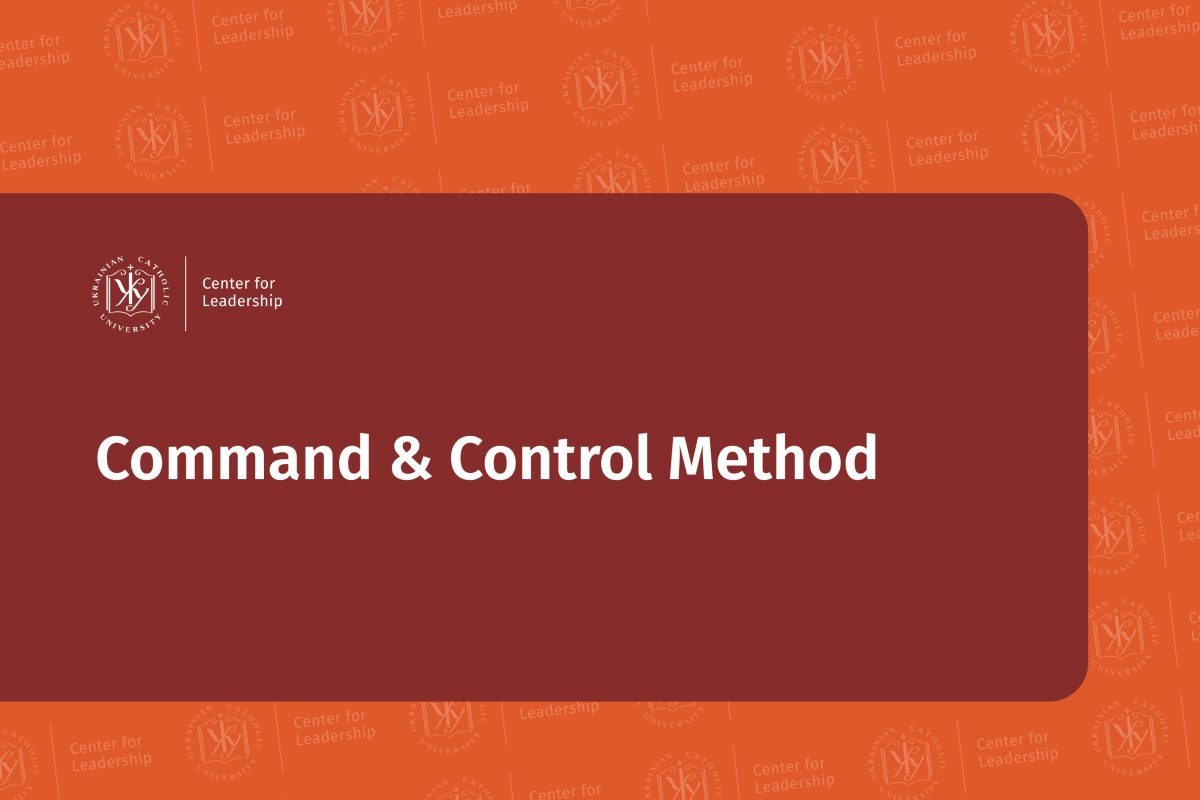
Command & Control Method
In one of our previous posts, we mentioned that 90% of companies are hierarchical and that most business tools have been borrowed from the military. Leadership styles are no exception, and today we will dive deeper into the one that made its way into the corporate sector first — the pointing finger style.
In the military, command and control or the pointing finger style involves creating a hierarchical structure where there is a clearly defined commander who issues orders and ensures their proper execution. Power and control are concentrated in the hands of one person, and subordination is mandatory and non-negotiable. In today’s business environment, using this method may seem odd, but this management style is still encountered. So, when does a clear hierarchy work, and when is it better to shift towards the diversification of responsibilities?
According to Keith Grint, the management style depends on how critical and dangerous the problem is.
In situations where the problem for the company and the manager is relatively safe because there is already positive experience in dealing with it and the consequences do not threaten the company’s existence, traditional management works well — planning, division of responsibilities, and setting intermediate control points. In such a context, everyone is in their place, acting according to job instructions and under moderate supervision from the manager.
In contexts where there is a high degree of uncertainty, the company’s problems are complex, and there is no experience in solving them, leadership becomes the most suitable management style. Leadership differs in that anyone who cares about the situation and has developed leadership qualities can take the initiative, regardless of their rank or position.
At critical moments, where there is a threat to the company’s operations or even to people’s lives, the strict and uncompromising pointing finger style becomes the most effective. In hostile critical contexts, subordinates often lose their understanding of the situation and purpose, and they feel anxiety and pressure. In such a psychological state, it is difficult to make decisions independently, and that’s when the team needs clear directions from the leader. However, there are exceptions to this rule if the team has been systematically and purposefully prepared for decentralization during a crisis.
Many Ukrainian companies survived the early stages of the full-scale invasion because, in a critical moment when everyone felt confused, someone in the team stepped up and pointed the way forward, showing what to do. Nevertheless, as soon as the situation stabilized, the effectiveness of decentralized power and leadership methods returned, since people needed to feel involved in restoring normalcy and once again desired the space to make decisions and create positive changes.
As we can see, there is no universally correct management style: the appropriateness of using one tool over another is determined by the context. Sensitivity to context is what all modern managers and leaders need to develop.